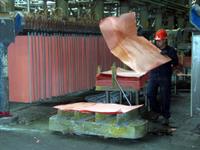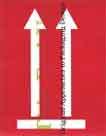
My three-day epic trip to Potosi, Bolivia was exhausting but eminently worthwhile. It may only be just over 1,000 miles from Santiago but to get there takes almost 12 hours and had be bouncing through five airports through Chile and Bolivia.
Potosi is a beautiful two-hour drive from Sucre, both historic Spanish colonial cities, but it is 4,200 metres above sea level so one walks around with a permanent headache and fatigue, and can feel the blood throbbing in one's veins.

The Potosi mint
However, it was the opportunity to interview Potosi's mayor, the department governor and representatives of the mining cooperatives that was the real jewel, to hear first hand how a mining project could change the lives for so many, in a country where the 90% poverty rate means that about 13,000 children work in the mines.
US miners to give Bolivia new hope
By Paul Harris in Karachipampa
300 people cram into the unused control room of the Karachipampa lead-silver foundry, a white elephant completed in 1983 on the approach road to Potosi, Bolivia’s historic mining town, to witness the signing of an agreement to develop a zinc plant that is hoped will change their lives.
Women in straw hats carrying babies wrapped in traditional colourful woven blankets file silently into the room with their children and husbands, unemployed miners. But this is not another protest in a land of broken promises but as word spread around the city about the signing people turned out in their dozens to hear for themselves how an investment by Arizona’s Atlas Precious Metals (APM) aims to reactivate mining in the region and jump-start the local economy.
Karachipampa, which never operated due to a collapse in metal prices, lies in the shadow of the Cerro Rico “mountain of silver” that was the crown jewel of Spain’s South American empire. But despite its mineral endowment, Bolivia is the poorest country in South America which means boys as young as five miss school to shine shoes and sell newspapers in the streets of Potosi and nearby Sucre, to help their families survive.

The Karachipampa zinc smelter
The renaissance APM will spark is through a $100mn investment to build a plant to produce zinc, a metal that is used to protect iron and steel from corrosion and stops cars from rusting. Used in batteries, zinc can also store six times as much energy as other systems, which increases the range of electric vehicles that states such as California are keen to see more of.
“We are committed to build a 80,000 tpy zinc plant and we may even go for a 150,000 tpy plant,” says APM president Roy Shipes to widespread gasps among the audience. The project is close to the heart of Shipes, a soft-spoken former general manager at copper mines in Peru and Papua New Guinea, who has spent a decade putting the project together.
Atlas will give miners a market for their concentrates on their doorstep beneficially changing local economics by replacing the international traders that buy Bolivian concentrates at a fraction of the market price. Zinc trades at about $1,100/t but Bolivia’s miners only receive $300/t because they are penalised for the lead, silver and other metals the concentrates contain. APM will pay the miners for the silver and lead content of their concentrates as well.
“Traders punish the miners for the impurities in the concentrates so the miners end up with just 20% of their value. With the smelter they will be paid a just price and for all the mineral content, which will start a true reactivation of mining,” said Comibol vice president Antonio Revollo.
Mining cooperatives will also make big savings on transportation costs. Shipping to Peru costs them $54 per tonne, close to Bolivia’s average wage, so this saving alone means an immediate quality of life improvement, according to Felipe Flores, president of the departmental federation of cooperative miners (Fedecomin). “With better prices in the local market everyone will want to work. We feel happy because we will not have to sell our material abroad,” Flores said.
APM will employ 2,500 people but indirect employment will be much more extensive. Reducing mining costs and increasing prices will help reactive 14 mines that have been abandoned for five years [when metal prices sank]. “We estimate that Karachipampa will allow 60,000 cooperative miners to work and bring about 22,000 jobs in transportation and other services,” says Revollo.
Karachipampa will generate about $200mn/year in income for the miners and about $500mn/year for Bolivia. This income will allow Potosi to become one of the best cities in the country in terms of health, education and quality of life in the next 10 years according to mayor Dr René Joaquin. Unemployment will fall from its 8% level and farming, clothing manufacturing and other services are expected to develop as the population swells from 160,000 to a forecast 215,000 inhabitants.
“Karachipampa will recover the hope of the town. Potosi as a town was almost abandoned but now it will have a development boom and will become synonymous with confidence in the country. Mining will give a belt of rural communities the confidence to invest in the development of livestock and fruit farming. Mining centers are consumers of everything,” Joaquin said.
APM is the king pin but not the only mining development changing Potosi. Investments by Denver’s Apex Silver and Idaho’s Coeur d’Arlene will bring foreign mining investment in Potosi to almost $1bn in the next couple of years. “Potosi is not poor, it is rich. All we lack is the opportunity that this type of investment brings,” said Potosi department governor Felix Muruchi.
Such investment is music to the ears of the 11 cooperative mining federations that have waited 20 years for Karachipampa to start up. Importantly for Atlas, this means it has their support. “Social problems are the most important problem and we want the international companies to generate employment to reduce poverty. It is necessary that this comes from a foreigner as international organizations can bring resources to Bolivia,” said Walter Villarroé, president of the national federation of miners cooperatives Fencomin.
As the applause dies down and the municipality band strikes up the women quietly file out of the room with their husbands and children to walk the 7km back to Potosi, a city whose history is inexorably linked to mining. “Potosi is a city where you can invest in mining, make money and really do good, give people jobs and improve their lives,” says Shipes











